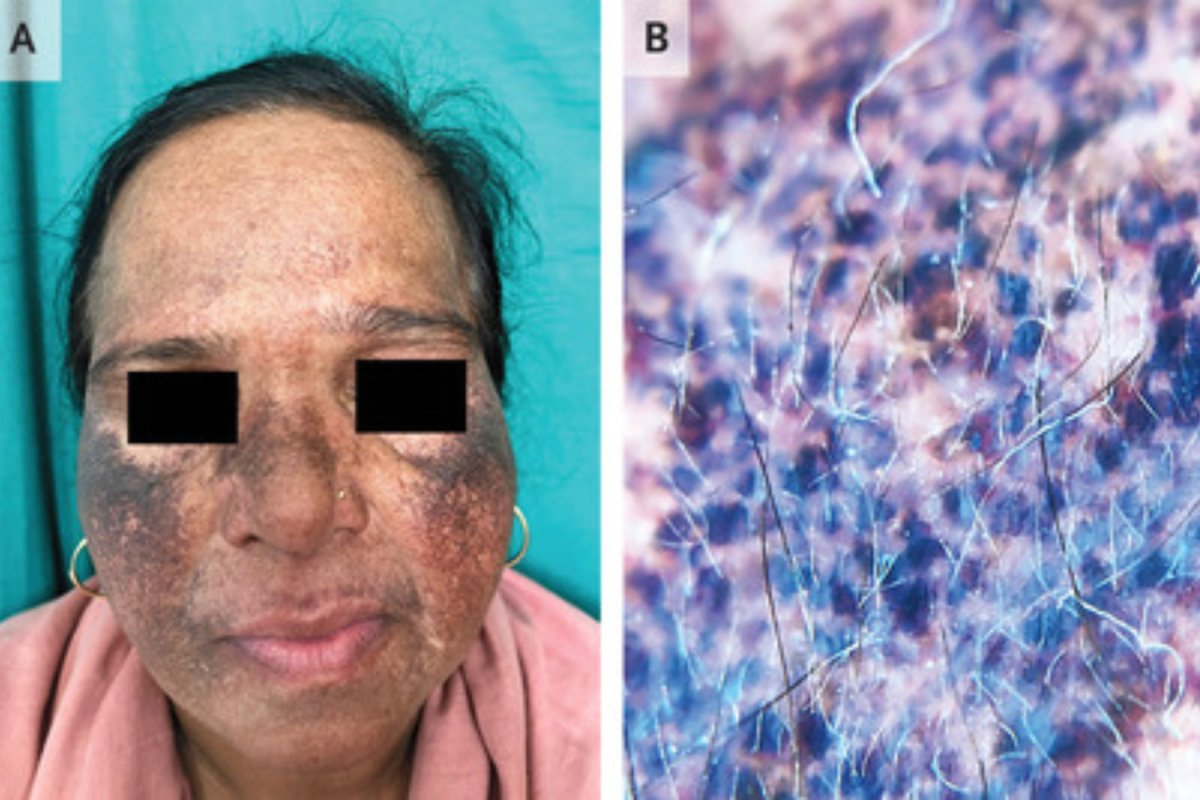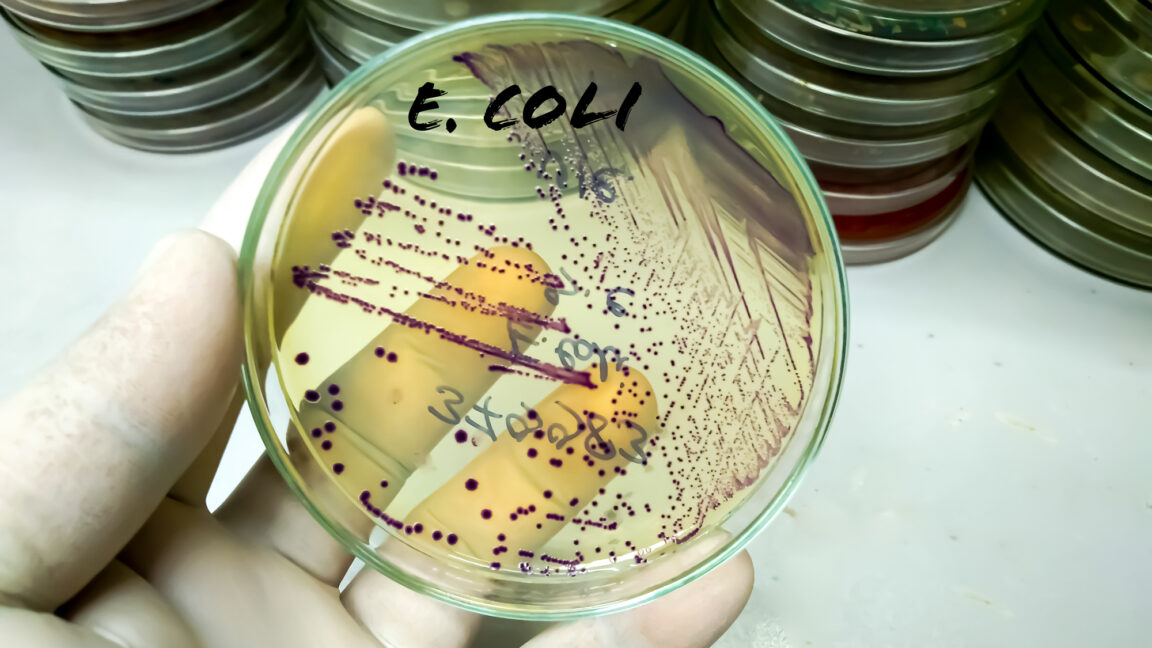A woman’s skin has taken on a strange blue-brown hue after using a skin-lightening cream. This condition, called exogenous ochronosis, had been affecting the 55-year-old patient for a year before she sought help at the hospital in Vadodara, India. The woman had been using a skin-lightening cream containing the skin-bleaching agent hydroquinone to address patches of hyperpigmentation or melasma on her cheeks. However, those areas have now turned blue-brown, as reported in a case study in the New England Journal of Medicine.

Image of the woman’s skin affected by exogenous ochronosis (Panel A). Dermoscopy of the affected areas revealed hyperchromic, blueish, pinpoint macules (Panel B)
The New England Journal of Medicine ©2024.
“She had started applying a skin-lightening cream containing hydroquinone to her face daily to treat melasma,” authors Nikita Patel and Hiral Shah, of Government Medical College Baroda, India, wrote in the case study. “On physical examination, bluish-brown patches with background erythema [skin reddening] and telangiectasias [widened blood vessels] were observed on the cheeks, nasal bridge, and perioral region [around the mouth], with lesser involvement on the forehead.” Exogenous ochronosis is a type of dermatitis caused by the application of hydroquinone or phenols to the skin. When skin affected by the condition is viewed under a microscope, it appears yellowish-ochre in color but appears blue-brown to the naked eye due to light scattering. “Ochronosis is a hyperpigmentation disorder that results from the accumulation of ochre-colored deposits in tissue. It is deemed … exogenous when related to the use of skin-lightening agents,” the authors wrote in the paper.
Hydroquinone has been banned in cosmetic creams in the European Union since 2000 due to its potential side effects and was nearly banned by the FDA in 2006. Around 10 to 15 million skin-lightening products are purchased annually worldwide, with Japan having one of the largest markets for the products. Prolonged use of hydroquinone increases the risk of developing exogenous ochronosis, particularly if used in sun-exposed areas of the body. It can be very difficult to eliminate, with most treatments aimed at prevention. Some studies have suggested that a Q-switched alexandrite (755 nm) laser could be used to treat the condition.

A skin-biopsy sample from the woman’s left cheek showed extracellular deposition of yellow-brown, banana-shaped bodies in the dermis. This is typical of exogenous ochronosis.
The New England Journal of Medicine ©2024.
“Exogenous ochronosis is difficult to treat and may not be reversible. Counseling regarding the importance of using sun protection and discontinuing the use of the skin cream was given to the patient. A topical emollient and retinoid gel were also prescribed,” the authors explain. However, two months after seeking treatment at the hospital, the woman saw very little change in the level of pigmentation of her skin. “At 2 months of follow-up, the patient had minimal abatement of the hyperpigmentation,” the authors wrote.
Do you have a tip on a science story that Newsweek should be covering? Do you have a question about skin? Let us know via science@newsweek.com.
Uncommon Knowledge Newsweek is committed to challenging conventional wisdom and finding connections in the search for common ground. Newsweek is committed to challenging conventional wisdom and finding connections in the search for common ground.
Skin lightening caution as cream results in woman’s face turning bluish-brown













